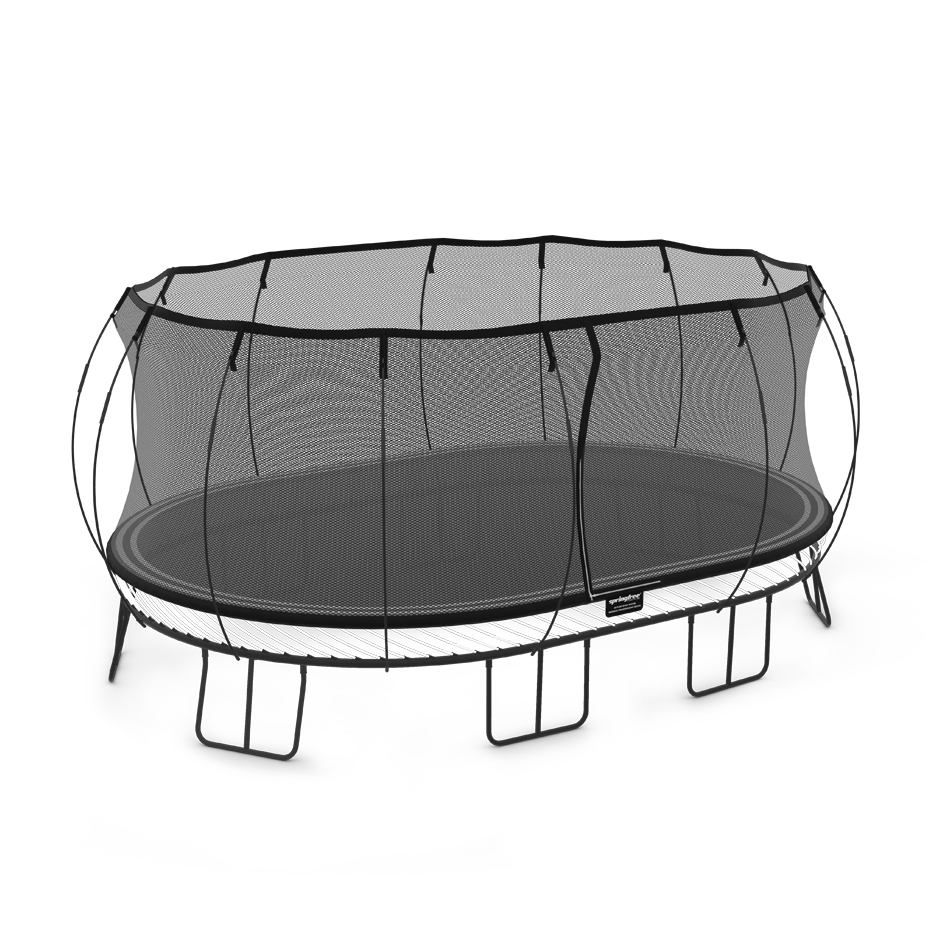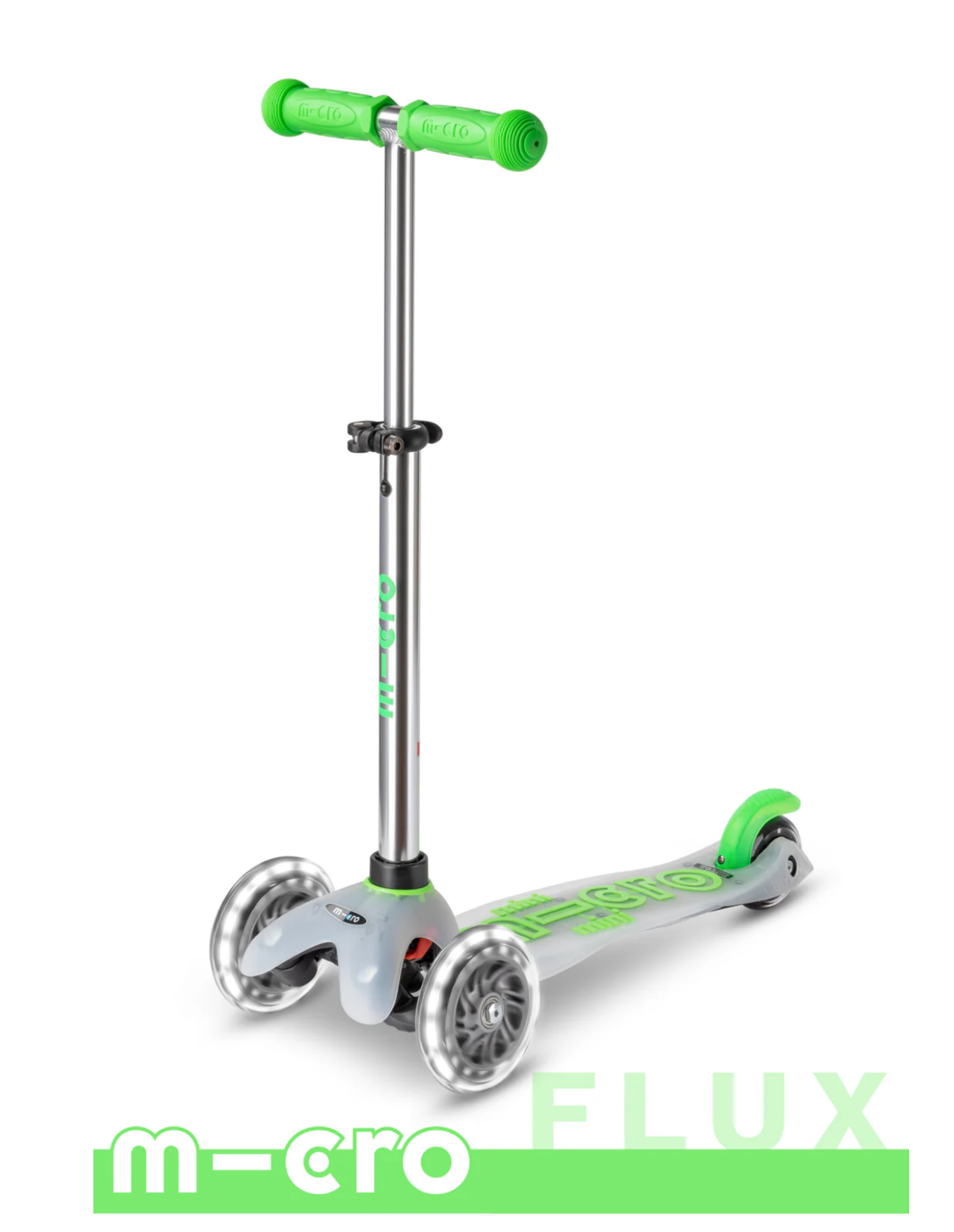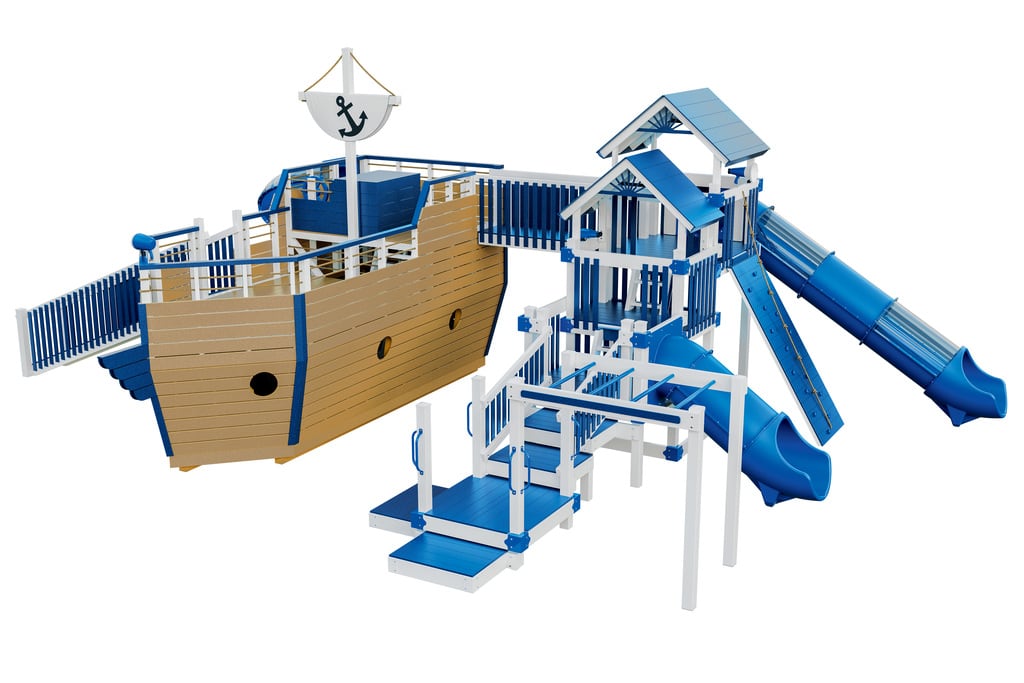
The Safest Trampoline for Kids: How to Choose the Right Design by Age
As a parent, you want your kids to have fun and stay active. A trampoline is one of the easiest ways to keep them moving, laughing, and using up that endless energy. But every parent also wants to keep playtime safe.
Before buying one, it helps to know which trampolines are safe for kids, what features really matter, and which designs can grow with them over the years. Picking the right size and style makes a big difference in comfort and trampoline safety.
Let’s get into how to find the safest trampoline for kids, what to look for by age, and the safety features that make each bounce worry-free.
Are Trampolines Safe for Kids?
What age is safe for a child to start jumping on a trampoline? According to the American Academy of Pediatrics, it’s best to wait until your child is at least 6 years old before using a full-sized trampoline. Kids younger than that still have developing bones and balance, making them more likely to get a sprain, bruise, or other injuries from a fall or hard landing.
For younger children, a mini or toddler trampoline is a safer starting point. These smaller trampolines use softer bounce and extra foam padding to reduce risk while helping kids build strength and coordination. Once they’re older, a kids trampoline with a sturdy steel frame, soft edges, and a tight net enclosure can make playtime both fun and secure.
What Makes a Trampoline Safe or Unsafe?
Not all trampolines are built the same, and the difference often comes down to design. Older models with exposed metal springs, thin mats, or weak steel frames can increase the chance of injury. These parts can pinch, rust, or break over time, which is why most pediatric experts recommend avoiding them.
A safer kids trampoline uses stronger materials and smarter construction. Springfree trampolines are known to reduce up to 90% of product-related injuries by removing hard impact points altogether. Its small design changes like these make a big difference in keeping kids safe while they jump.
How Design Affects Trampoline Safety
When parents look for the best trampoline for kids, they often focus on the size or price. But what truly keeps kids safe starts with the design. The materials, shape, and placement of each part determine how well a trampoline can handle regular jumping without putting kids at risk of getting hurt.
Let’s take a closer look at how Springfree trampoline features can make a big difference.
No Springs, No Pinch Points
One of the main causes of trampoline injuries comes from traditional metal springs. These springs can pinch fingers or toes when the protective pad moves out of place. Over time, steel parts can rust or lose tension, which increases the risk of getting hurt while jumping.
A springless or springfree trampoline removes that problem completely. Instead of metal coils, it uses flexible rods underneath the mat to create bounce without leaving open gaps. The result is a smoother, safer jump that’s easier on the bones and joints, especially for younger kids still learning balance and coordination.
Explore the best trampoline accessories like anchors, steps, and hoops that attach securely to the frame. These small upgrades keep your setup stable during strong wind and make outdoor play even more enjoyable for the whole family.
Hidden Frame for Safer Landings
Many trampoline injuries happen when kids land on the hard metal frame or slip into the springs. That’s why the safest trampoline for kids keeps the steel frame completely hidden beneath the jumping surface. With those parts out of the way, every jump feels smoother and safer for your child’s bones, joints, and neck.
A springfree trampoline takes this even further by using soft foam padding and flexible rods that absorb impact instead of reflecting it. This design helps reduce the chance of bruises and sprains, giving you a setup that focuses on both fun and health. It’s a thoughtful feature that makes your kids trampoline not just safer but also built to last through years of play.
Strong Enclosure and Safety Net Design
A sturdy trampoline enclosure makes a big difference in keeping kids safe while they play. A tall, durable net helps prevent falls, which are one of the most common injuries seen from backyard trampolines.
Look for a design where the net connects inside the frame instead of wrapping around it. This small detail helps keep feet and hands from slipping through the sides.
The safest options, like springfree trampolines, use flexible rods that curve away from the jumping surface. This keeps the net firm and steady without hard poles near your child. It also helps lower the chance of bruises, sprains, or hitting metal parts during play.
Flexible Rods and Strong Materials for Lasting Safety
A safe trampoline begins with the right build. High-quality steel frames and flexible rods provide stable bounce while reducing strain on your child’s bones, joints, and neck. Unlike older metal springs that can rust or pinch, flexible rods absorb impact smoothly, helping prevent bruises and sprains during play.
Many springfree trampolines are made with weather-resistant parts that stay strong against wind and moisture, keeping your kids trampoline durable for years. To understand how design plays a big role in safety, you can check out the benefits of jumping on a Springfree trampoline, where safer materials and thoughtful construction keep every jump secure.
Safety Certifications and Recognition
When looking for the safest trampoline for kids, it helps to start with those that are safety certified. Trampolines that meet ASTM standards go through tests for strength, balance, and how well they protect against injuries. This shows that the brand values both safety and durability.
Many trusted models, like springfree trampolines, earn top ratings because they remove common risks found in older trampolines. With no exposed metal parts and a strong steel frame, they offer better security and peace of mind while your kids play.
Choosing the Best Trampoline for Kids by Age
Picking the right kids' trampoline depends a lot on your child’s age, size, and how they’ll use it. Below are quick tips to help you choose the best trampoline for kids at different ages, from toddlers to teens.
Ages 3–5 (Toddlers)

At this stage, safety and balance matter more than height or bounce. Toddlers are still developing coordination, so a mini trampoline or toddler trampoline with a handlebar is the safest choice. These small setups let kids enjoy movement and build strength while keeping the risk of falls and injuries low. Always use them on a flat surface and with supervision nearby.
For variety, you can also introduce gentle outdoor toys that encourage balance and motion. See how active play supports early growth in our best outdoor toys for preschoolers guide.
Ages 6–12 (School-Age Kids)
By this age, kids are ready for a real trampoline experience, but safety still comes first. A medium trampoline between 8 and 12 feet gives enough room for controlled jumps without taking over your backyard. Look for one with a strong steel frame, flexible springless design, and a secure net enclosure to avoid injuries during group play.
Parents often focus on current size, but it’s smarter to buy with growth in mind. A medium-sized round trampoline offers enough space for controlled jumping as kids get older without compromising security or taking up too much yard space. If your child loves gymnastics or active exercise, consider one with strong bounce quality and stable anchoring to handle frequent use safely.
Ages 13+ (Teens and Older Kids)
For teenagers, a large trampoline or jumbo trampoline makes all the difference. Models that are 12 to 14 feet wide give enough jumping space for higher bounces and more movement without feeling cramped.
A sturdy steel frame, tight net enclosure, and firm mat help handle stronger jumps while keeping everything steady. These features also reduce stress on the bones, joints, and neck, which is important as teens get taller and more active.
Weight limit is something you shouldn’t skip checking. Older kids tend to jump harder, so it’s best to pick a springfree trampoline that supports a higher load without bending or shaking.
For extra stability, having your trampoline installed professionally keeps it level and anchored, even in strong wind or heavy use. Our trampoline installation service makes sure everything fits securely so your kids can jump freely and safely.
Smart Trampoline Safety Tips for Every Age

No matter your child’s age, a few smart habits can make trampoline play both safe and fun. These tips help prevent injuries, protect the trampoline, and keep everyone healthy while they jump.
- Set up the trampoline on flat ground with at least 3–5 ft of open space around it to avoid bumps or falls.
- Limit play to 1 jumper at a time to lower the risk of sprains, bruises, or collisions.
- Always supervise children under 12, even with a safety net or enclosure installed.
- Remind kids to jump near the center of the mat, where balance is more stable.
- Add a trampoline ladder or step to make it easier and safer to get on and off.
- Inspect the steel frame, net, and foam padding regularly, especially after strong wind or heavy use.
- Choose a size that fits your child now but also gives room to grow. This helps avoid early replacements.
Choose Safety and Quality Over Short-Term Savings
When you search for trampolines, you’ll find plenty of cheaper ones online that look similar to well-known brands. The truth is, what separates them is not the look but the quality and safety behind the design.
At Recreations Outlet, we focus on safety, durability, and real support. Each springfree trampoline we sell is built with weather-tested materials and hidden frames for better security. We also offer delivery and professional installation across Ohio, Kentucky, and Indiana, making sure your trampoline is stable and ready for safe use from day one.
We stay connected even after setup. If you need advice, maintenance help, or follow-up service, our team is always here for you. Visit us in our Cincinnati and Columbus showrooms to explore our collection in person.
FAQs About the Safest Trampoline for Kids
What is the safest trampoline for kids?
The safest models use springless designs, hidden frames, and flexible rods that keep jumpers away from hard edges. These features lower the risk of injuries and make the experience smoother. Regular upkeep also matters. Staying consistent with safety checks helps prevent wear and tear that can lead to accidents.
Are Springfree trampolines safer?
Yes. Springfree trampolines are designed without metal springs or exposed frames, removing the areas where kids usually get hurt. When paired with quality nets and strong trampoline accessories like anchors and steps, they create a safer setup that lasts through years of use.
What is a safer alternative to a trampoline?
For toddlers or smaller yards, mini trampolines and enclosed rebounders are great for light jumping and balance practice. You can also try a compact playset with a low platform. It gives kids the fun of climbing and sliding without high falls. For more outdoor play ideas, check out our safe backyard playground tips to keep playtime active and safe.
How can you tell if a trampoline is safe?
Look for hidden springs, a sturdy steel frame, and a tight enclosure that connects inside the jumping area. Also, check the weight limit and inspect the foam padding regularly. If you’re not sure, a professional setup can make sure everything is secure and level.










